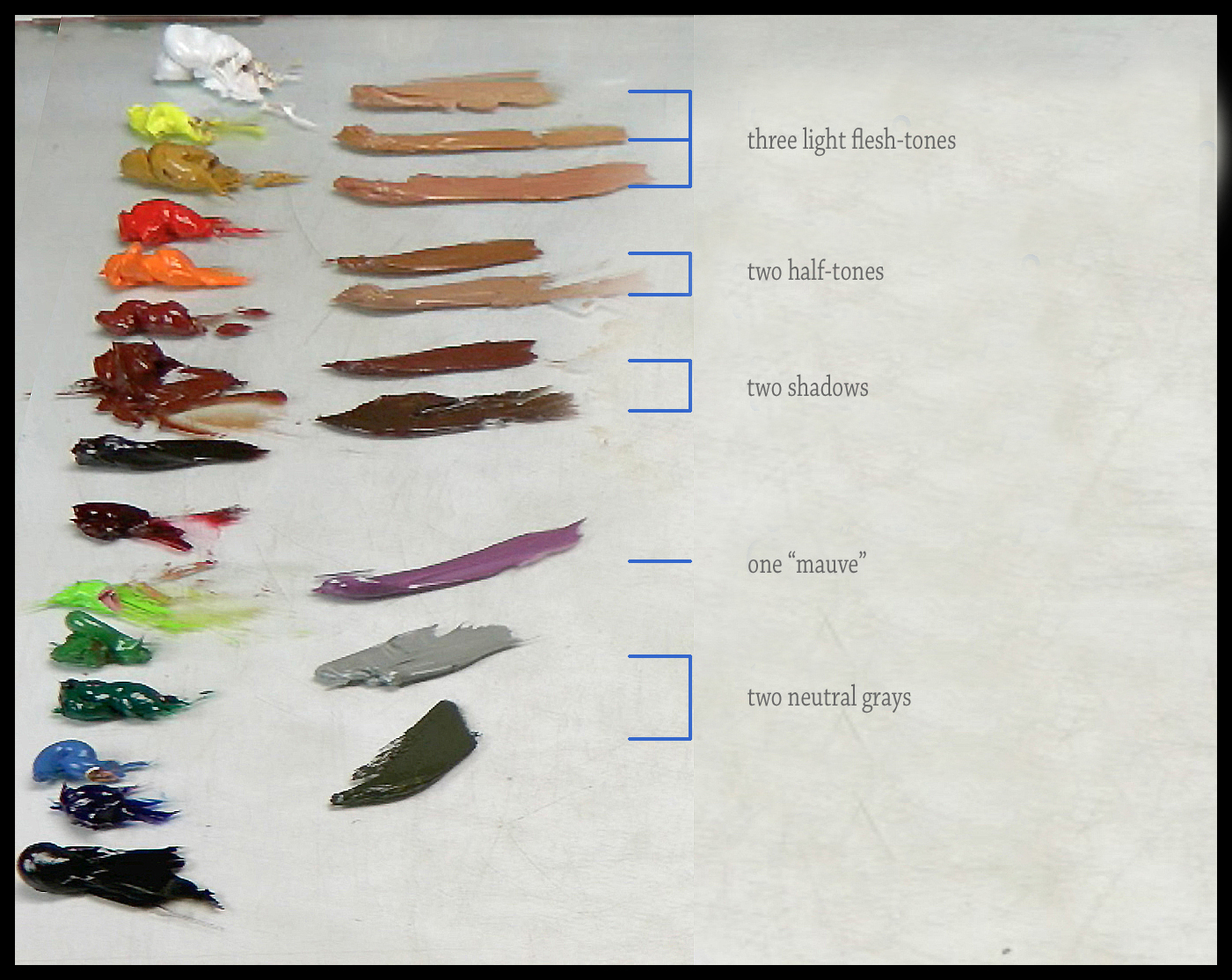

Only then do they probably begin to think about the grayed down versions of these in which to add to the appropriate warm and cool categories.

That is, it is easier to think that warm colors are just yellow, orange and red, and that cool colors are just blue and green. Since it is so simple to do, then no doubt, practically all artists basically begin by thinking about the overall “bright” colors when contemplating warm and cool colors.

Flesh water colors skin#
You get a pretty good depiction of somebody’s skin tone, don't you? Now that you know this open secret, though, just go to your color wheel and choose any two warm colors at random and mix them together and see what you get. That being the case, then the formula (using pastel sticks) is simplified to become: And, because either black or white is already mixed into the pastel sticks, then gray can be omitted in the formula. The good thing about painting in pastel is that one does not have to worry too much about adding gray in the flesh color formula, because either black or white is inherent in ALL of the various shades except the pure hue, itself. Like I said, “art, not science,” ladies and gentlemen.
Flesh water colors tv#
Go to a store that sells televisions and note that when television sets are side-by-side and have the same TV station selected, that each TV set has different colors, yet, still looks good when viewed in isolation. This also explains why black & white photographs still look good even though they are not in color, by definition and, it also explains why color TV still looks good even if the colors are not adjusted correctly. Realize, that this is art, and not an exact science, for the painting will still look perfectly fine, even if the wrong colors are used.

This is why it is a good thing to have at least ten shades of gray handy at all times. You can even optionally mix any color at random with that correct gray. This is why I surmised, above, that maybe many artists don’t know this, maybe they just use the same colors that their teachers taught them to use with no understanding as to why those colors work.Īn Important Tip: If, when painting a small area in a portrait, you cannot determine what some mysterious color is, merely squint your eyes and observe that spot on your model, and substitute the equivalent value of gray for it on your painting. You would think all the art books would mention this, however, I have tons of them where I cannot find this information anywhere. I, independently, came up with this formula, myself. To an aspiring artist unfamiliar with color mixing, the selected color sets seem to conflict, however, in reality, that is not the case.įor in actuality (even if the artists themselves do not know this) all flesh colors boil down to a simple formula: Many artists of whatever major medium (oils, watercolor or pastels) have developed their favorite mixture of hues to result in flesh colors. By the way, cooking recipes are also non-math related formulas. So, whatever you may feel about relying on formulas for non-math related matters, I am sure those readers (who have no idea about the concept of flesh colors but always wanted to know) may consider the information given in these chapters, priceless. To me, this (and the following "flesh color/flesh tone" chapters) is the most important section in this eBook, especially if you are already rather adept at drawing people. Is there at least one formula for flesh colors? This eBook starts off with what I really wanted to know the most when I was in high school.


 0 kommentar(er)
0 kommentar(er)
